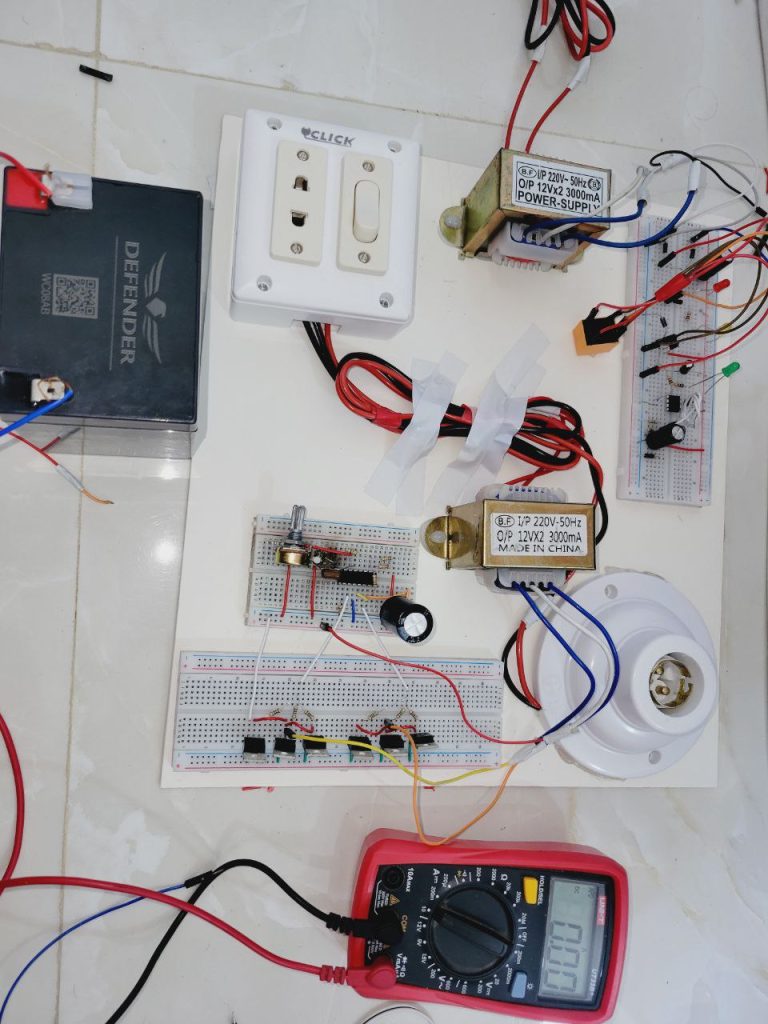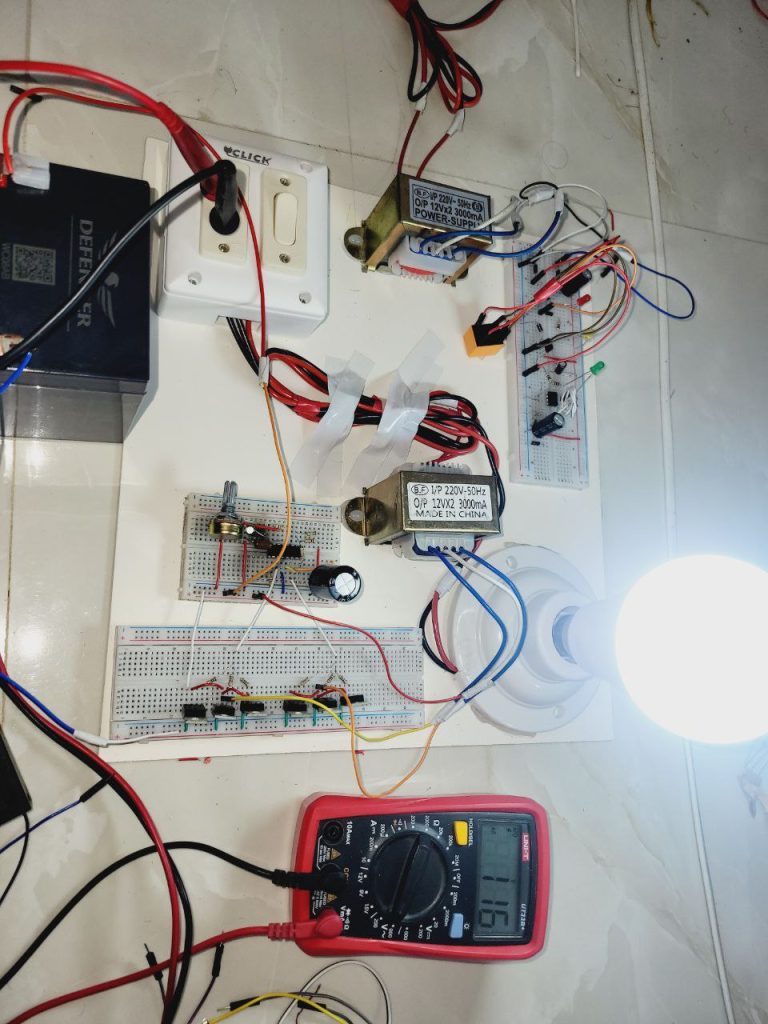Smart Hybrid Inverter
A smart hybrid inverter, also known as an intelligent hybrid inverter, is a modern Uninterruptible Power Supply (U.P.S.) system designed to use both solar energy and electricity from the grid to charge a storage battery. This stored energy can then be used to supply power when one or both energy sources are unavailable. Typically, solar panels generate electricity during the day, with peak production occurring around midday. However, this generation often doesn’t align with household energy consumption, which tends to peak in the evening when solar production is low or nonexistent. To bridge this gap, the system stores energy for later use and manages energy storage and consumption intelligently.
Special Features:
1. Dual Charging Modes: The battery can be charged using either solar power or the main grid supply. When solar power is insufficient, the system automatically switches to grid power for charging. If solar power is available, the battery charges through solar energy.
2. Optimal Solar Energy Utilization: The system ensures that solar energy is used efficiently to reduce dependence on grid power.
3. Uninterrupted Power Supply: The battery provides backup power in the event of a power outage from either or both energy sources, ensuring a continuous power supply.
4. Low Maintenance: The inverter requires minimal servicing, reducing maintenance costs.
System Components:
– 12V, 10W Solar Panel
– 12V, 7200mAh Rechargeable Battery
– CA3130 Operational Amplifier
– 12V Single Changeover Relay
– 1N4007 Diodes
– Zener Diode
– Light-Emitting Diode (LED)
– BC547 Transistor
– Step-Down Transformer
– MOSFET (Metal-Oxide-Semiconductor Field-Effect Transistor)
– BJT (Bipolar Junction Transistor)
Advantages:
– Stable Daily Output: Since the inverter is powered by both solar and grid sources, fluctuations in one can be balanced by the other, leading to a more stable power output.
– Uninterruptible Power Supply: When solar power is unavailable, the system automatically switches to grid power, and in the absence of both, it switches to battery backup, ensuring continuous power supply.
– Clean Energy Utilization: The system primarily uses solar energy, reducing reliance on conventional fuels and minimizing pollution.
– High Efficiency: With no moving parts and the primary reliance on solar energy, the inverter operates with greater efficiency compared to conventional inverters.
– Low Operating Costs: The system requires less frequent maintenance and has lower operating costs.
Disadvantages:
– Inefficient Charging in Cloudy Weather: The system may struggle to efficiently charge the battery during cloudy conditions.
– High Initial Cost and Installation Space: The initial investment is significant, and the system requires ample space for installation.
– Battery Dependency: If the battery fails, the entire system stops functioning.
– Battery Maintenance: Regular monitoring and servicing of the battery are required, and it typically needs replacement every 2-3 years.
Troubleshooting:
– Charging Circuit Issues: If the charging circuit malfunctions, disconnect the solar panel and connect a DC variable voltage source. Gradually increase the voltage. When it reaches 12 volts or higher, the logic at pin 6 of the CA3130 should shift from low to high.
– Inverting Circuit Issues: If there is no output, check the CD4047 multivibrator’s output at pins 10 and 11 and compare it with pins 7 and 14. Next, verify the output value on the transformer’s primary side.
This intelligent hybrid inverter system ensures reliable and efficient power management by utilizing clean solar energy and providing uninterrupted power supply, though it does come with challenges such as high initial costs and battery maintenance requirements.

